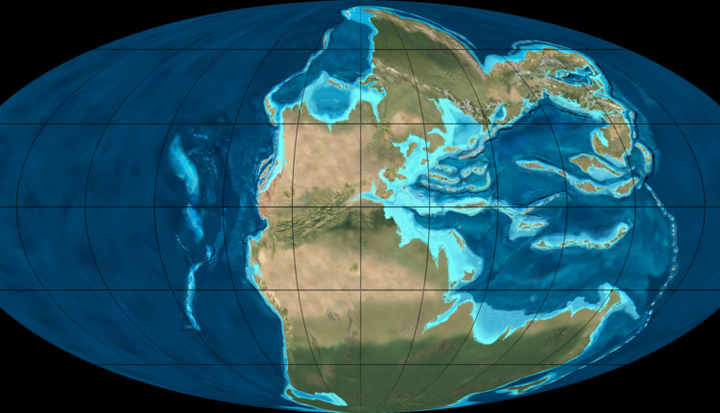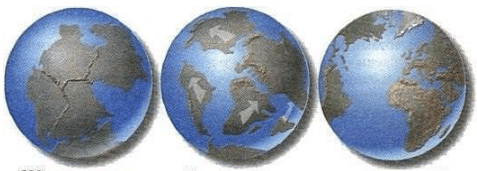The question of the possible existence of one large continent in ancient times is raised with each new discovery in geology. The similarity of artifacts from different parts of the world, fossils, suggests this idea. Scientists put forward several theories about the movement of the continents.
Prominent people on the movement of the continents
Geologist F. B. Taylor at the beginning of the last century proved the theory of forced drift due to the growth of mountain ranges caused by it. Also, the geophysicist, astronomer and meteorologist A. Wegener based his theories on finds in the ice of Greenland (there were found fossils of plants from the tropical zone), determined her place in the past near the equator. America and Africa, based on their soil conditions, definitely ranked closer to the South Pole. There are plenty of facts proving the existence of continental drift.
By the end of the 20th century, there were no scientists willing to challenge these theories, so there was an undeniable set of facts confirming the theory of plate tectonics. The essence of the theory is the speed of movement of the continents – 1-10 cm per year.
Scientists of the modern world refute this theory, proving with research on the increase in the speed of plate drift. The past conference in California allowed Professor K. Condi to acquaint the scientific world with the theory of acceleration of motion, which occurs contrary to the cooling of the Earth. In his opinion, the convection currents of heat released from the bowels of the planet are the driving force behind eight large and many small plates. Condi’s theory is based on the study of the geomagnetic field in the earth’s crust.
The observations published in the journal Precambrian Research do not provide specific figures for the new speed, but they prove that over the past 2 billion years there has been an acceleration of continental collisions and a decrease in the age of ocean basins.
The movement of the continents in the history of the Earth
The first thing that the attention of the scientific world was drawn to was the external similarity of the American continents with Africa and Europe. And the conversation about this became more substantive when technology made it possible to study the continental line at a depth of 1 km. under water. The coincidence of the shapes of the continents struck the imagination.
Watch a video about the movement of continents in the history of the Earth.
History of the movement of the continents
Professor P. Cawood at a conference in California, confirming the theory of acceleration of the movement of continental drift, spoke about the history of the movement of the continents and the period of stability of the plates of the continent. It coincided with the time period of the existence of one continent, Rodinia. This is over 1.1 billion years ago.
For almost 400 million years, the movement stopped. The Earth has cooled down and reached a balance in the temperatures of the core and the external environment. The slow subsidence of one continental plate under another led to drift and even its acceleration. The subduction zones that appeared gave rise to tectonic activity, which led to the breakup of the continent, the release of new chemical elements into water and air, and, possibly, to the evolution of life on Earth.
Already after 300 million years, the Earth was divided by four continents:
Further movement pushed the first two plates into Euro-America, which collided with the Angara already 100 million years later. This is how Laurasia was formed. Having overcome the distance of the waters of the ancient Tethys Sea, the last two continents collided, forming one piece of land – Pangea.
It took less than 100 million years to fix the first breakup of Pangea and less than 180 million years before the complete breakup and formation of the present geographical position of the continents.
All collisions were accompanied by uplifting of rocks and formation of mountain lines. Appalachians and Ural Mountains, mountains of Scotland. North America, etc. A careful study of their rocks, coincidences in their composition, confirms the theory of the collision of tectonic plates. Such a coincidence in the rocks in the places of the alleged breaks of the continents plays into the hands of prospecting geologists who predict the presence of one rock on different continents.
Earth in the future
As continental drift continues, the scientific world allows itself to make predictions about the future of the planet. Careful study of the past makes it possible to concretize the future, to make adjustments for the impact of mankind on natural processes.
Errors are possible in the time scale of forecasting the future of the planet. So the ice age did not happen and the parade of planets passed without serious consequences. But it is not possible to stop the movement of the continents, and it is realistic to draw their path. Therefore, many geologists agree on the collision of all continents into one – Pangea (Proxima or Ultima – opinions differ).

